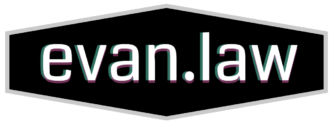[Brian Beckham is a contributor to Internet Cases and can be contacted at brian.beckham [at] gmail dot com.]
Io Group, Inc. v. Veoh Networks, Inc., 2008 WL 4065872 (N.D.Cal. Aug. 27, 2008)
The U.S. District Court for the Northern District of California ruled that Veoh’s hosting of user-provided content is protected by the DMCA safe harbor provision, and that it does not have a duty to police for potential copyright infringement on behalf of third-parties, but rather must act to remove infringing content when so put on notice.
IO produces adult films; Veoh hosts, inter alia, its own “Internet TV channels” and user-posted content (much like YouTube). In June 2006, IO discovered clips from ten (10) of its copyrighted films ranging from 6 seconds to 40 minutes in length hosted on Veoh. Rather than sending Veoh a “DMCA Notice & Takedown” letter, IO filed the instant copyright infringement suit. (Coincidentally, Veoh had already removed all adult content sua sponte — including IO’s prior to the suit). Had Veoh received such a notice, so the story goes, it would have removed the content, and terminated the posting individual’s account.
When a user submits a video for posting, Veoh’s system extracts certain metadata (e.g., file format and length), assigns a file number, extracts several still images (seen on the site as an icon), and converts the video to Flash. Prior to posting, Veoh’s employees randomly spot check the videos for compliance with Veoh’s policies (i.e., that the content is not infringing third-party copyrights). On at least one occasion, such a spot check revealed infringing content (an unreleased movie) which was not posted.
Veoh moved for summary judgment under the DMCA’s Safe Harbors which “provide protection from liability for: (1) transitory digital network communications; (2) system caching; (3) information residing on systems or networks at the direction of users; and (4) information location tools.” Ellison, 357 F.3d at 1076-77. Finding that Veoh is a Service Provider under the DMCA, the Court had little trouble in finding that it qualified for the Safe Harbors. IO admitted that Veoh “(a) has adopted and informed account holders of its repeat infringer policy and (b) accommodates, and does not interfere with, “standard technical measures” used to protect copyrighted works”, but took issue with the manner in which Veoh implemented its repeat infringer policy.
Veoh clearly established that it had a functioning DMCA Notice & Takedown system:
- Veoh has identified its designated Copyright Agent to receive notification of claimed violations and included information about how and where to send notices of claimed infringement.
- Veoh often responds to infringement notices the same day they are received.
- When Veoh receives notice of infringement, after a first warning, the account is terminated and all content provided by that user disabled.
- Veoh terminates access to other identical infringing files and permanently blocks them from being uploaded again.
- Veoh has terminated over 1,000 users for copyright infringement.
The Court held that Veoh did not have a duty to investigate whether terminated users were re-appearing under pseudonyms, but that as long as it continued to effectively address alleged infringements, it continued to qualify for the DMCA Safe Harbors; moreover, it did not have to track users’ IP addresses to readily identify possibly fraudulent new user accounts.
The Court further noted that: “In essence, a service provider [Veoh] is eligible for safe harbor under section 512(c) if it (1) does not know of infringement; or (2) acts expeditiously to remove or disable access to the material when it (a) has actual knowledge, (b) is aware of facts or circumstances from which infringing activity is apparent, or (c) has received DMCA-compliant notice; and (3) either does not have the right and ability to control the infringing activity, or – if it does – that it does not receive a financial benefit directly attributable to the infringing activity.”
The Court found that (1) there was no question that Veoh did not know of the alleged infringement — since IO did not file a DMCA Notice (2) it acted expeditiously to remove user-posted infringing content, (3) it did not have actual knowledge of infringement, (4) it was not aware of infringing activity, and (5) it did not have the right and ability to control the infringing activity (the Court did not address any financial benefit).
In sum: the Court “[did] not find that the DMCA was intended to have Veoh shoulder the entire burden of policing third-party copyrights on its website (at the cost of losing its business if it cannot). Rather, the issue [was] whether Veoh [took] appropriate steps to deal with [alleged] copyright infringement.”
There is much speculation as to how, if at all, this case will affect the Viacom / YouTube case. YouTube praised the decision, Viacom noted the differences. Each case turns on its own facts, but to the extent there are similarities, this decision is wind in YouTube’s sails.
Case is: IO Group Inc.(Plaintiff), v. Veoh Networks, Inc. (Defendant)
 CNET News is running a story about how Jerry Scroggin, the owner of Louisiana’s Bayou Internet and Communications, expects big media to pay him for complying with DMCA takedown notices. No doubt Scroggin gets a little PR boost for his maverick attitude, and CNET keeps its traffic up by covering a provocative topic. After all, people love to see the little guy stick it to the man.
CNET News is running a story about how Jerry Scroggin, the owner of Louisiana’s Bayou Internet and Communications, expects big media to pay him for complying with DMCA takedown notices. No doubt Scroggin gets a little PR boost for his maverick attitude, and CNET keeps its traffic up by covering a provocative topic. After all, people love to see the little guy stick it to the man.
